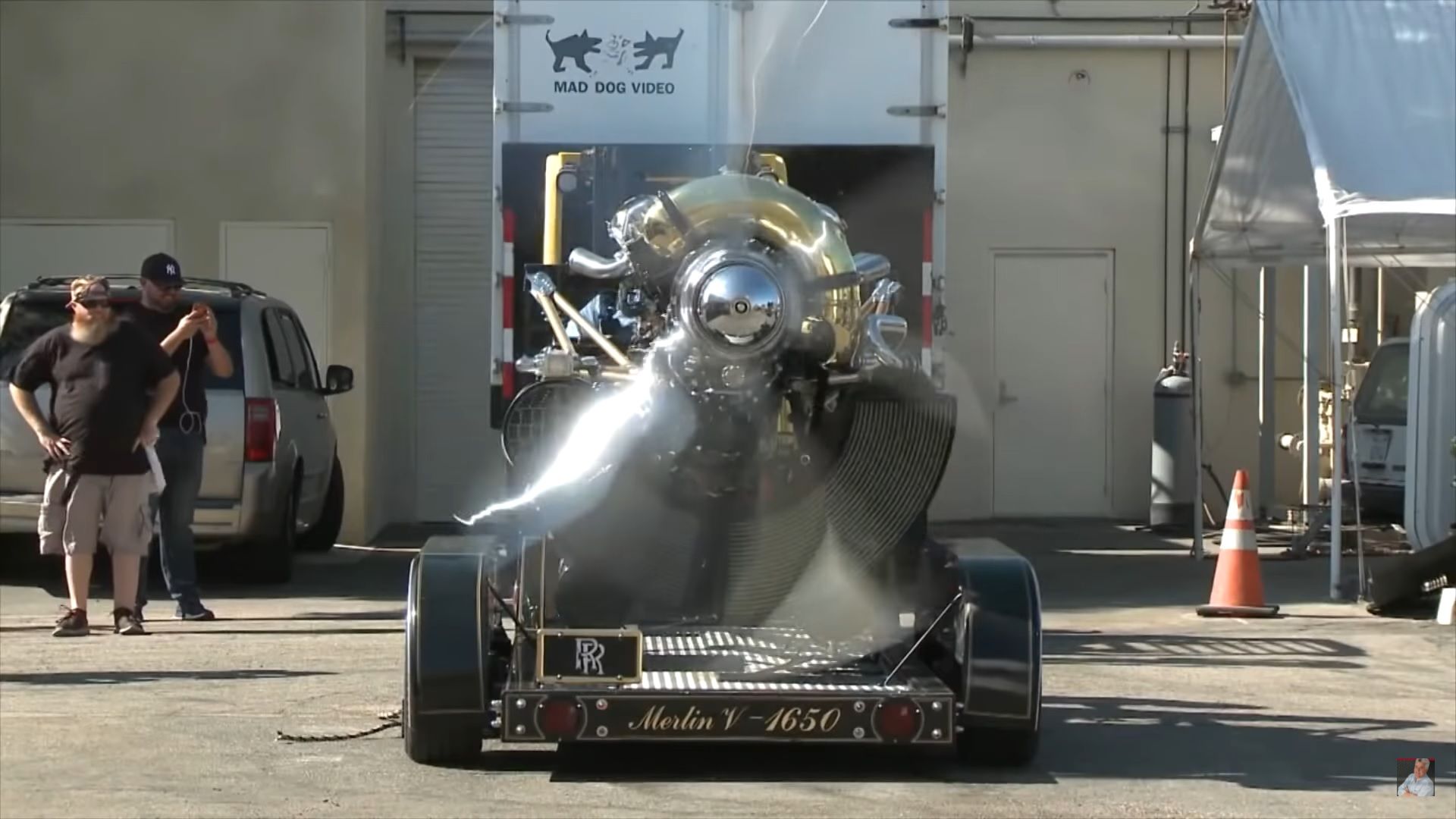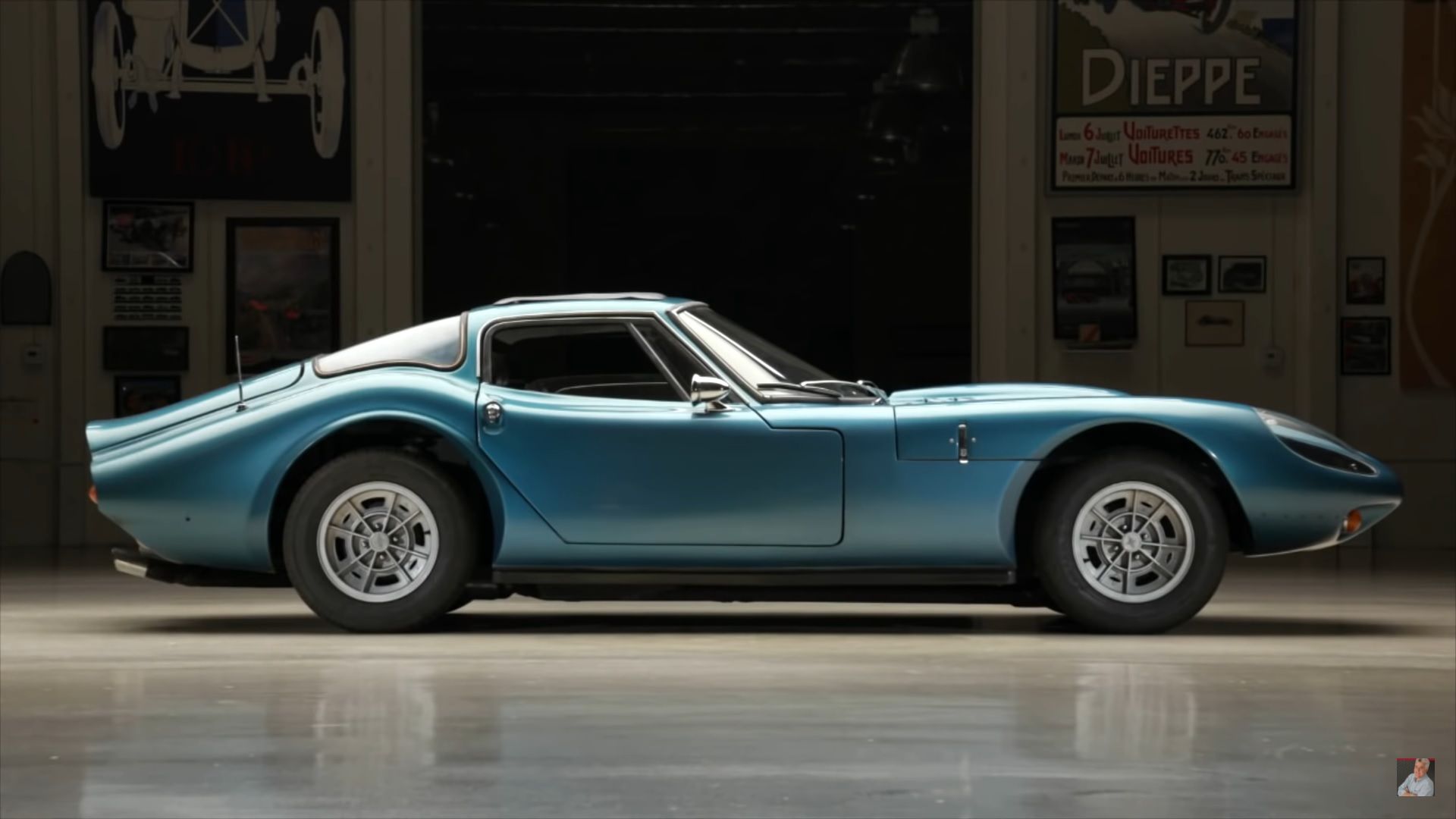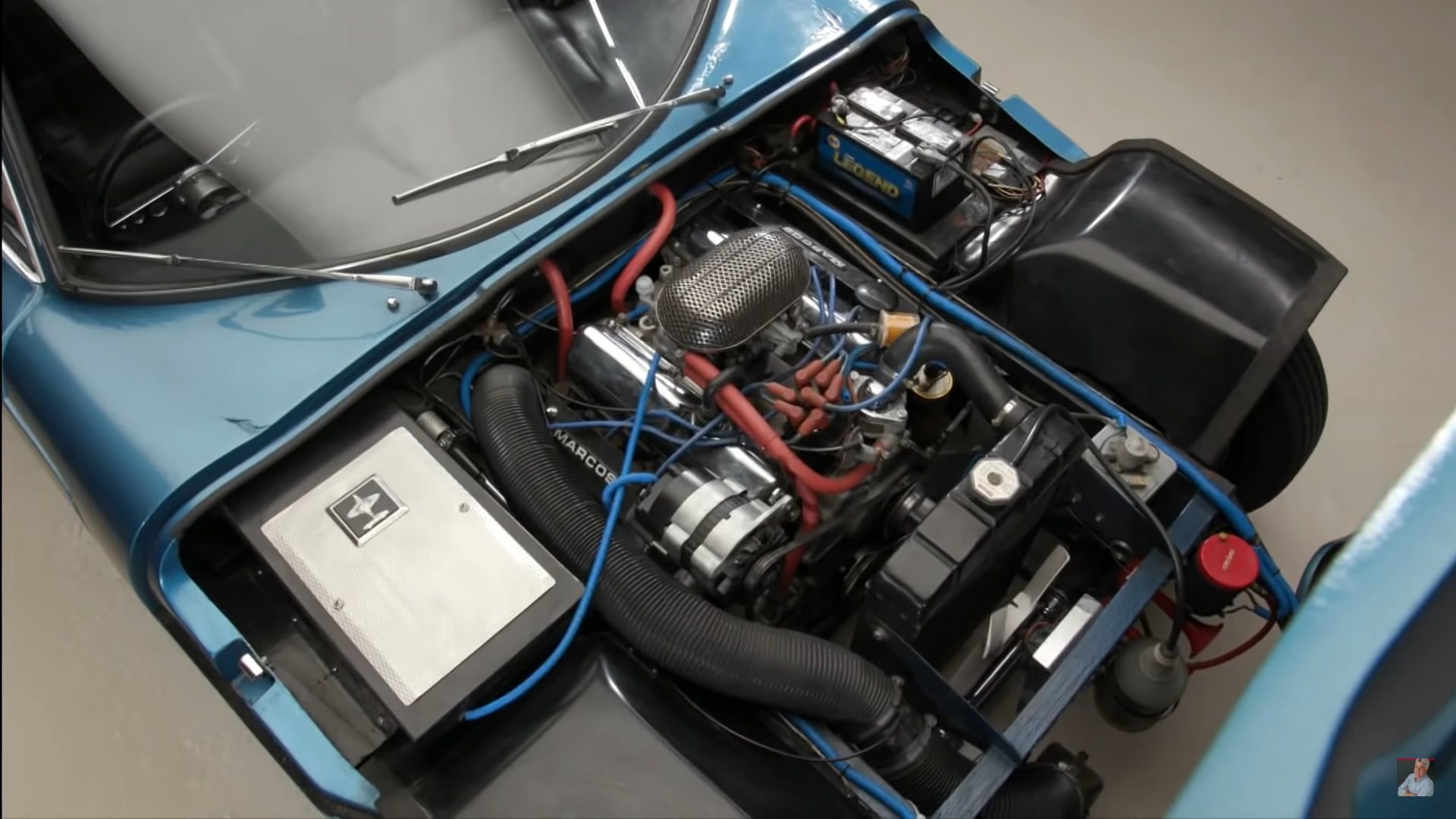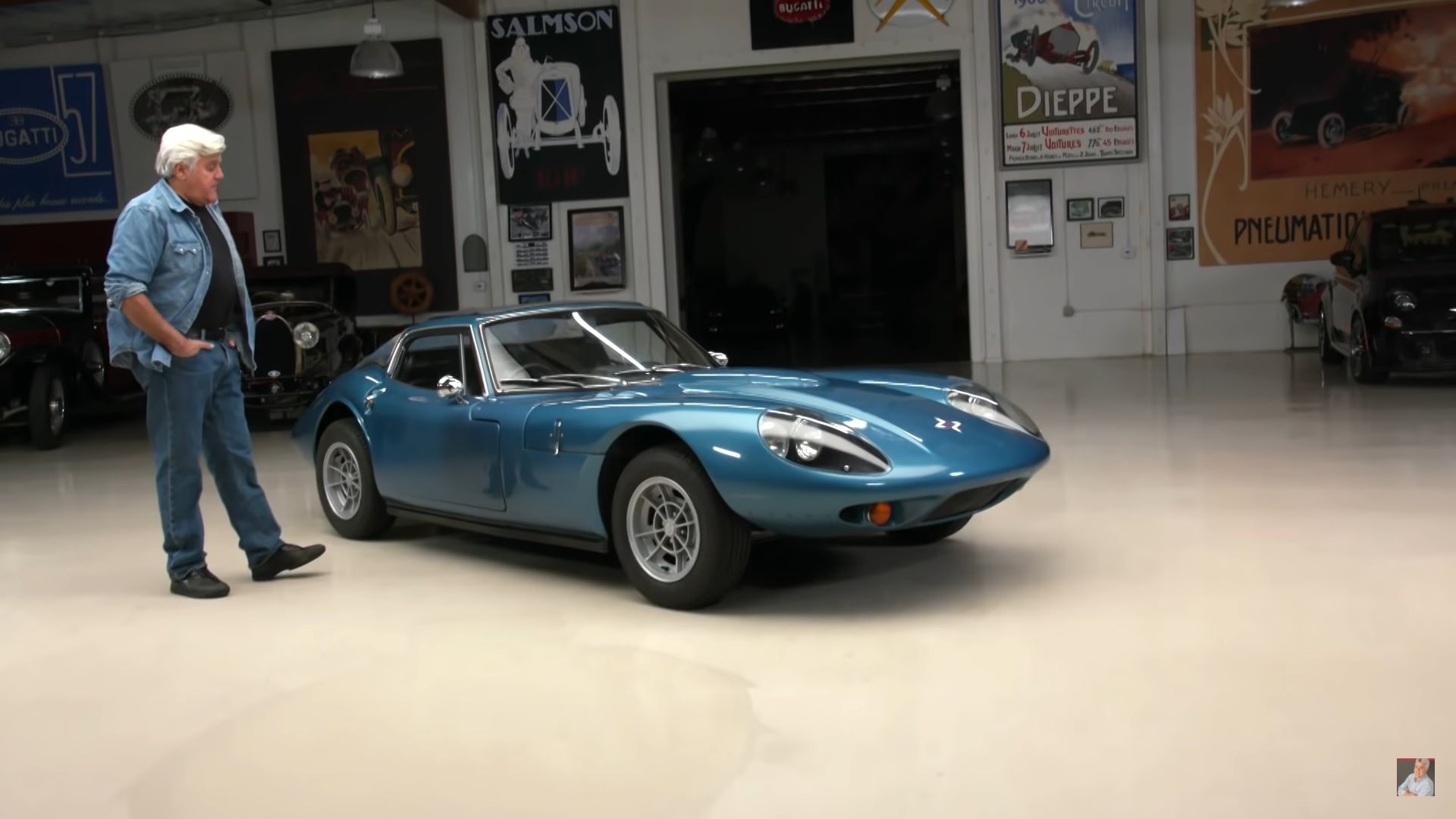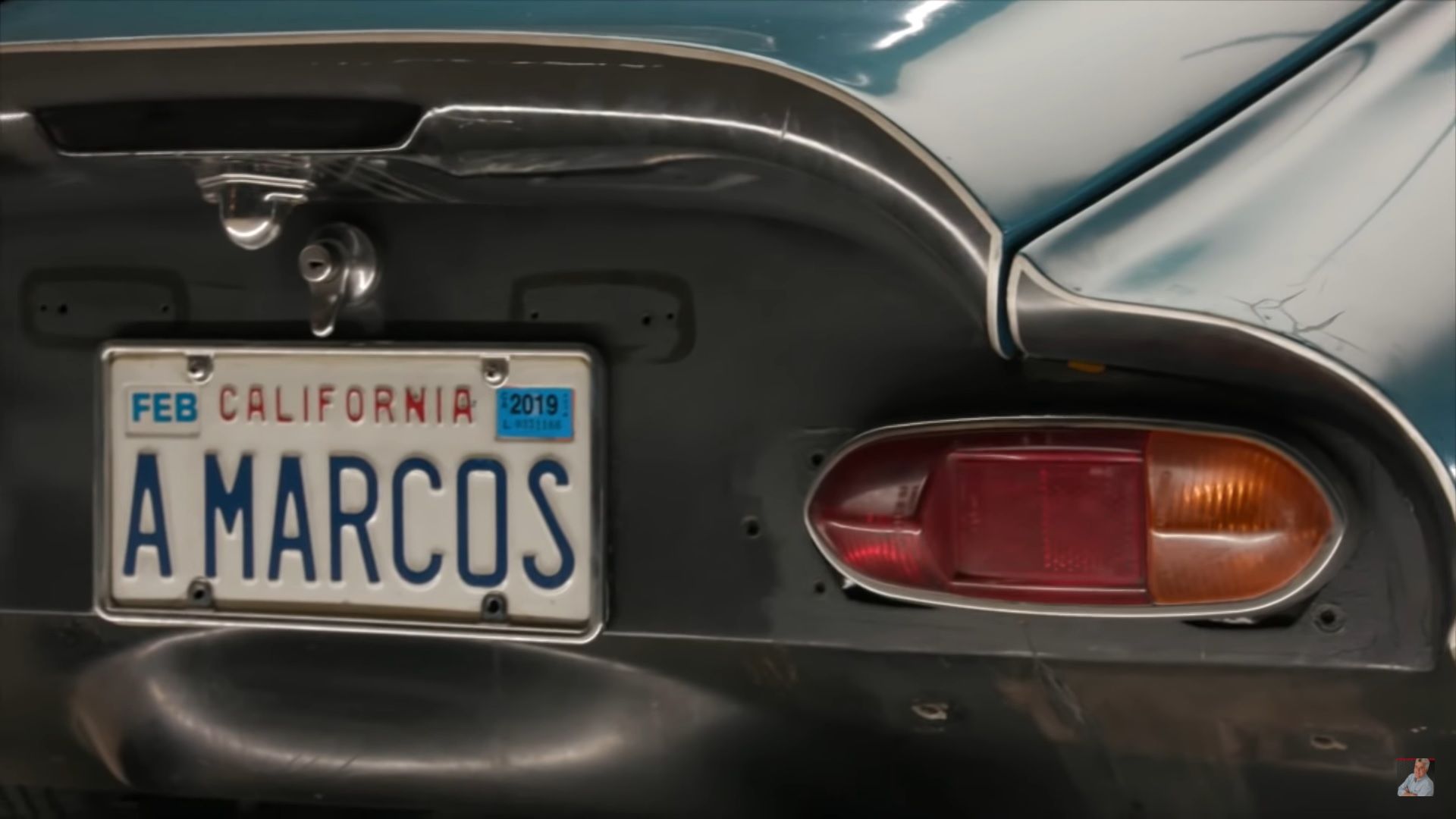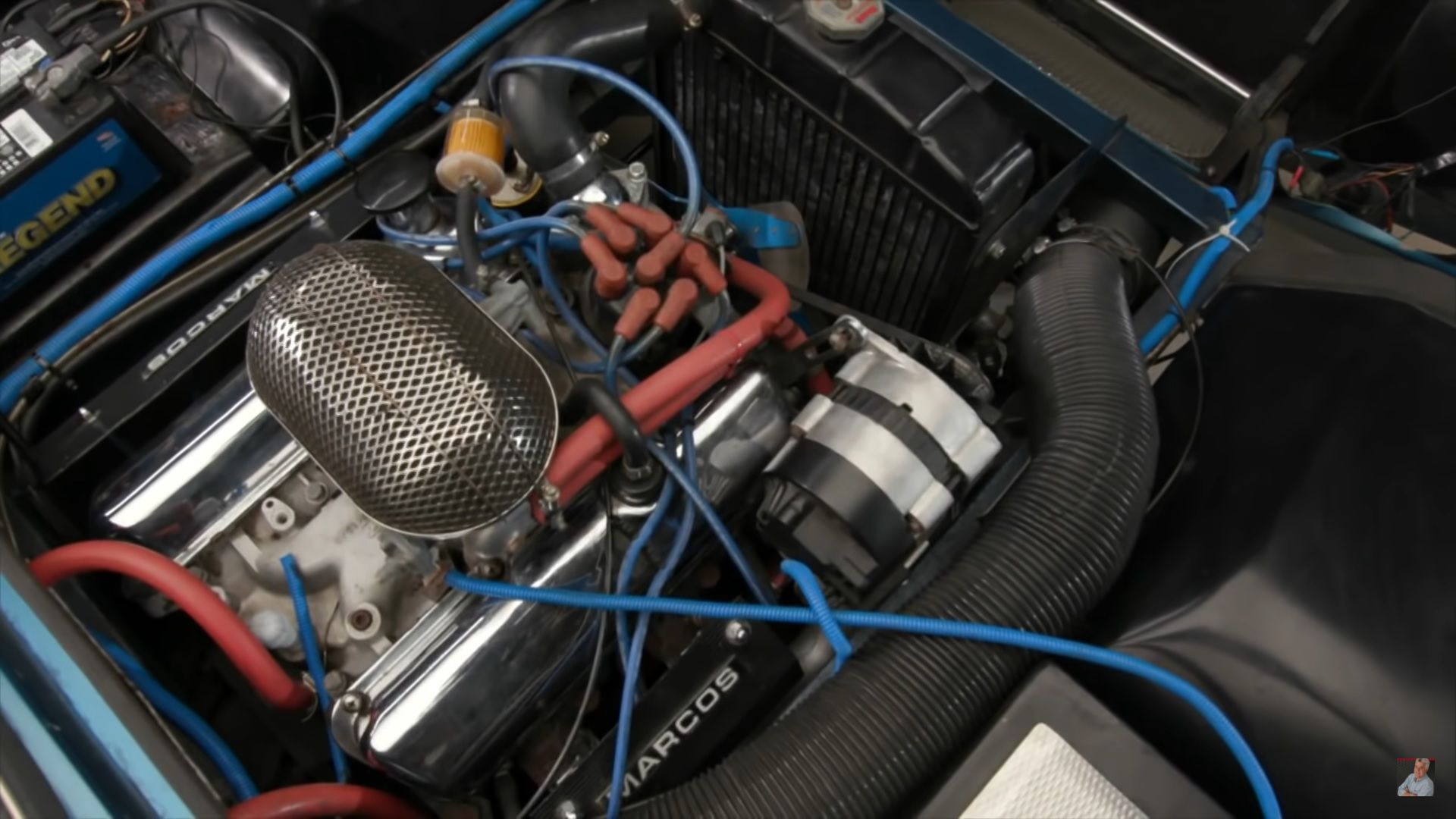When we talk about well-styled classic British sports cars, the first one to come to mind is usually the Jaguar E-Type. Then there are the lightweight cars like the MGB, Triumph Spitfire, and Austin Healey. The Marcos GT is one of those “other” cars that are slightly more obscure and not quite as well-known to most. Luckily, Jay Leno once again does a great job at introducing us to what he believes is “the most unusual and prettiest sports car of all time”, and he’s not alone.
Old to the bone
The Marcos GT is a very interesting car and features quite a lot of old-school tech. This includes the chassis, which on earlier cars was made of plywood. Believe it or not, “they had 386 different plywood pieces that were laminated together”. They were very strong, but in the end, they had to switch to a heavier steel chassis because of how expensive they were to make.
Inspired by an aircraft
The reason behind earlier Marcos GT models having a plywood chassis is that one of the company owners, Frank Costin, worked on the de Havilland Mosquito fighter bomber, the frame of which was constructed primarily of wood.
Low and lightweight
Like many other British sports cars of the 1960s and 1970s, the Marcos GT is small and lightweight. How small you ask? 43 inches. Jay Leno is barely 6 feet tall and the roofline reaches his waste-line.
Powered by a variety of engines
The Marcos GT was powered by a few different engines throughout the years. Earlier cars were actually called 1800 GT because they were powered by the 1.8-liter Volvo engine found in the P1800. Frazier’s car is a later model and features a Ford 3.0-liter V-6 with around 155 horsepower that's mated to a four-speed manual with overdrive. The very last version of the Marcos GT was powered by a Rover V-8.
Good enough to replace some icons?
Frazier only had the car for about five months at the time the episode was filmed, but he had some pretty cool classic cars before, such as a Datsun 240Z and a Porsche 911 – both cars that don’t need an introduction. We can safely assume that the Marcos GT is worthy to be up there with the likes of those.
You’ll be lucky if you see one in person
After some L.A. snob jokes, Frazier shares that only 1,200 Marcos GT have been made in total and fewer than 200 have steel chassis.
Victim of U.S. federalization
Bargain performance
Jay makes a remark about the price of Frazier’s Marcos GT. Regardless of condition, you can get one of these for under $50,000 and for as little as $20,000, if you’re willing to put some elbow grease into it. “If this had an Italian nameplate on it” it would be $250,000 – Jay says.
“Gracefully” sliding in
After some more talks about where all the parts have been sourced and how lightweight it is, Jay manages to (barely) position himself behind the wheel, which is on the right. Around 16:45 is the start of the drive and that Ford V-6, which is the equivalent of a 327 V-8 in the US, sounds quite epic.
“The Essex lump”
The Essex lump, of course, refers to the Ford V-6 that’s powering the Marcos GT, since it was considered a big engine in Britain. “In England, the V-6 is like a V-8” – Jay remarks. Regardless, this is still enough to get the small sports car to 120 mph (193 km/h). Impressive for the early 1970s.
“It’s all about how a car makes you feel” – Jay continues while enjoying the Marcos GT. The sensation is that of a more substantial car, a racy feel. Sometimes, it’s not a good idea to meet your heroes, but in this case “this is exactly what I thought it would be” – Jay concludes.



